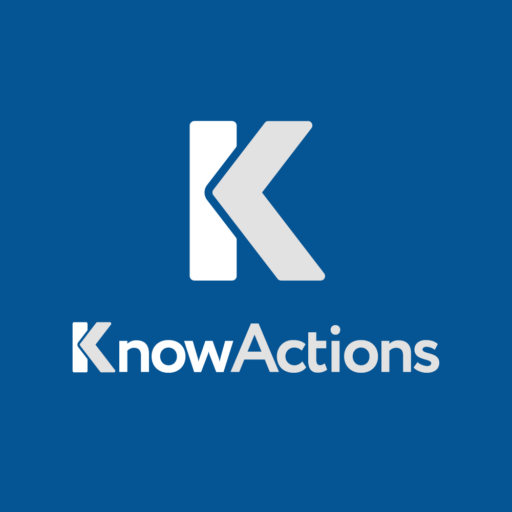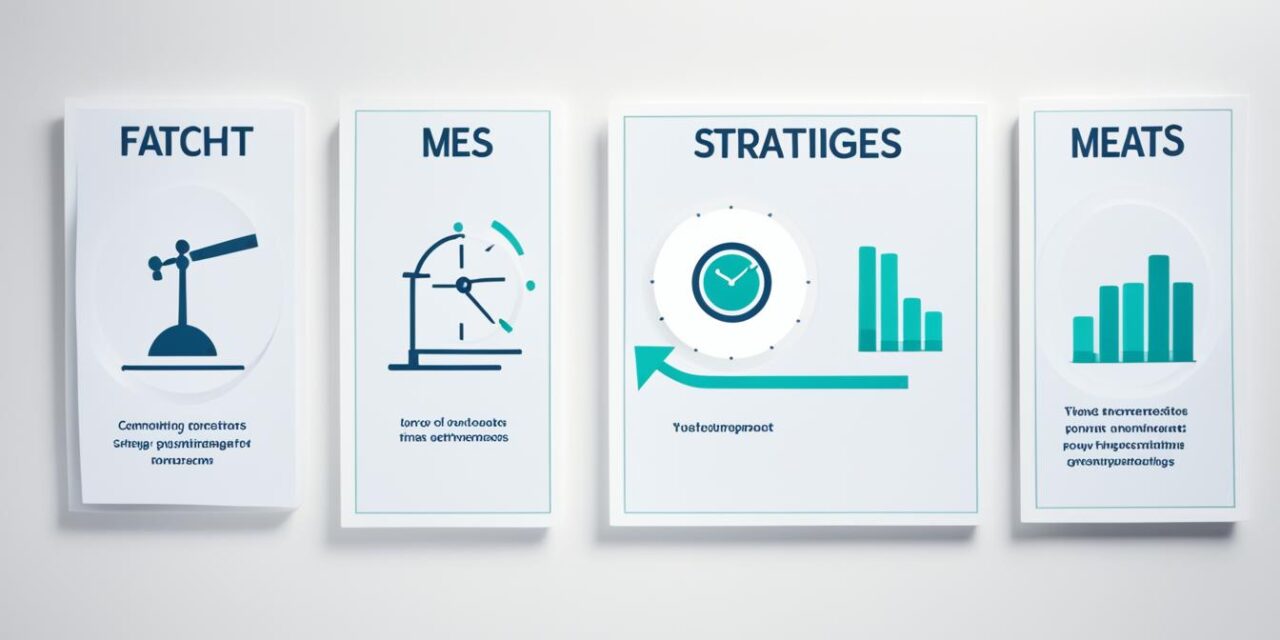Did you know that executives now spend a staggering 23 hours per week in meetings, compared to less than 10 hours in the 1960s1? This alarming increase in meeting time has significant implications for workplace productivity and overall business success. As companies grapple with the challenge of balancing collaboration and individual work, the need for meeting efficiency and time optimization has never been more critical.
Research shows that dysfunctional meeting behaviors are linked to lower levels of market share, innovation, and employment stability1. With executives across various industries feeling overwhelmed by the sheer volume of meetings, it’s clear that a systemic change in meeting culture is necessary. This article explores five practical strategies to reduce meeting times while maintaining productive discussions and ensuring meaningful outcomes.
By implementing these strategies, organizations can reclaim valuable time for deep work, boost creativity, and enhance overall productivity. The goal is not to eliminate meetings entirely but to make them more focused, efficient, and impactful. Let’s dive into the solutions that can transform your meeting culture and optimize time management across your organization.
Key Takeaways
- Executive meeting time has more than doubled since the 1960s
- Inefficient meetings negatively impact market share and innovation
- Systemic change in meeting culture is essential for productivity
- Balancing collaboration and individual work is crucial
- Implementing time optimization strategies can lead to more productive discussions
- Focused, efficient meetings result in better outcomes and time management
The Rising Tide of Meetings in Modern Workplaces
The landscape of workplace communication has undergone a significant transformation over the past few decades. Meeting frequency has skyrocketed, profoundly affecting organizational culture and productivity. This shift has reshaped how we approach work and interact within teams.
Historical Perspective on Meeting Frequency
Time spent in meetings has increased by 10% annually over the last two decades2. This rise mirrors the growing complexity of modern business and the emergence of global, interconnected workplaces. Today, executives dedicate nearly 23 hours weekly to meetings, a stark contrast to earlier times.
Impact of Excessive Meetings on Productivity
The increase in meeting frequency has not directly led to a boost in productivity. A significant 67% of meetings are seen as ineffective by executives2. This inefficiency affects employee output, with 71% of professionals reporting wasted time due to unnecessary meetings2. Moreover, 92% of employees multitask during meetings, further highlighting the productivity issue2.
The Need for Systemic Change in Meeting Culture
The current meeting culture demands a fundamental overhaul. With 45% of meetings lacking clear objectives, there’s a pressing need to reevaluate our meeting strategies2. Organizations must cultivate a culture that prioritizes efficient communication and values employees’ time. This change is essential, as employees often spend about 80% of their time in meetings or responding to colleagues’ requests3. By streamlining meetings without sacrificing their impact, companies can reclaim valuable time and enhance overall productivity243.
Understanding the Cost of Inefficient Meetings
In the United States, over 80 million meetings occur daily, a staggering figure that highlights the significant time and resources invested in these gatherings5. For a small team of 20 project managers, spending 13 hours weekly in meetings, the weekly cost can reach $14,5605. This expense escalates exponentially in larger organizations, potentially leading to annual productivity losses in the millions of dollars5.
Effective time management in meetings is paramount. Executives spend nearly 23 hours weekly in meetings, with a staggering 70% of them deemed unproductive6. This inefficiency results in a shocking $399 billion annual cost for U.S. businesses6. The COVID-19 pandemic has worsened this issue, with the average number of meetings per person growing by 12.9% and the average workday length increasing by 8.2%7.
Meeting costs go beyond mere financial metrics. Excessive and unproductive meetings are linked to lower employee engagement and higher turnover rates6. A striking 89% of employees feel that unproductive meetings negatively impact their job stress, personal relationships, and overall health7. This underscores the pressing need for improved meeting strategies to enhance productivity and employee well-being.
| Meeting Impact | Statistics |
|---|---|
| Productivity Loss | $399 billion annually for U.S. businesses |
| Employee Engagement | 64% worry about piled-up work during meetings |
| Meeting Effectiveness | 91% admit to daydreaming during meetings |
| Workday Impact | 8.2% increase in workday length post-COVID |
To address these challenges, companies must prioritize measuring and improving productivity, establish norms around calendar management, and ensure meetings are well-planned and optimized7. By focusing on these areas, businesses can significantly reduce meeting costs and boost overall productivity.
Strategy 1: Implement Time Blocking Techniques
Time blocking is a method that significantly boosts productivity and focus. It involves dividing your day into specific blocks, each focused on particular tasks or groups of tasks. This technique allows you to achieve the same output in a 40-hour week as you would in 60+ hours without structure8.
Creating Protected Time for Deep Work
Deep work demands uninterrupted focus. Time blocking enables you to set aside protected periods for intense concentration. This method is particularly beneficial for those who find it hard to multitask or need to focus on a single task9. By allocating specific blocks for deep work, you can minimize context-switching and enhance your productivity.

Using Calendar Tools to Manage Availability
Effective calendar management is key to successful time blocking. Use digital calendars to schedule your blocks and make them visible to your team. This strategy aids in organizing meetings, avoiding a scattered schedule, and boosting productivity9. Don’t forget to include time for breaks and buffers between tasks to keep your focus sharp and avoid burnout.
Balancing Meeting Time with Individual Tasks
It’s crucial to balance collaborative work with individual tasks. Time blocking offers insights into how time is allocated across different initiatives9. Consider task batching, which involves grouping similar tasks in dedicated time blocks. This method can greatly reduce the mental effort of switching between different tasks throughout the day8.
| Time Blocking Strategy | Benefits |
|---|---|
| Deep Work Blocks | Improved focus, increased productivity |
| Meeting Grouping | Reduced context-switching, better time management |
| Task Batching | Decreased mental load, enhanced efficiency |
By adopting these time blocking strategies, you can establish a more structured workday, reduce burnout, and achieve a better work-life balance. The essence of successful time blocking is identifying your priorities and understanding your peak productivity hours9.
Strategy 2: Establish a “No Meetings” Day
Introducing a No Meetings Day can transform workplace productivity. This approach sets aside one day weekly or monthly for uninterrupted work. Many firms observe that having specific days free from meetings enhances certainty, predictability, and strategic planning10.
This method is especially advantageous for those overwhelmed by their meeting schedules. A significant 78% of individuals report their meeting calendars are often unmanageable, with most blaming higher management or their immediate supervisor for this11.
To enhance the effectiveness of a No Meetings Day, consider these steps:
- Block out 9 am to 5 pm on calendars to prioritize Focused Work Time
- Schedule consistent no-meeting days, such as every Monday or Friday
- Implement the policy organization-wide for better results
- Consolidate meetings into 3-4 days a week for longer periods of uninterrupted work
This approach yields substantial benefits. It minimizes interruptions to workflow, concentration, and work quality. Moreover, it addresses the concern that 67% of workers have about excessive meetings preventing them from achieving their best work11.
For those hesitant to commit, starting with “No Meeting Mondays” for a month can be a good trial. This period can showcase the potential for productivity enhancement and help tailor the strategy to your organization’s specific needs10.
| Meeting Statistics | Impact |
|---|---|
| 2 hours of useless meetings per week | 5% of total annual work time wasted |
| 71% of managers find meetings unproductive | 65% believe meetings impede work completion |
| 8-10% annual increase in meeting time since 2000 | Trend expected to continue |
By adopting a No Meetings Day, organizations can reclaim valuable time for deep work and strategic thinking. This leads to increased productivity and job satisfaction11.
Strategy 3: Master the Art of Declining Meetings
Mastering the art of declining meetings is essential for effective time management in today’s fast-paced work environment. Employees spend about six hours each week in meetings, while managers dedicate 60% of their time to them. This highlights the need to address meeting overload effectively12. By learning to assess meeting relevance and decline unnecessary invitations, productivity can significantly increase.
Assessing Meeting Relevance and Value
Before agreeing to a meeting invitation, it’s crucial to evaluate its purpose and potential impact on your work. Consider these key factors:
- Clarity of agenda and timeline
- Defined goals or desired outcomes
- Your role and contribution
- Possibility of sending a representative
If these elements are missing, declining the meeting might be the best option. This is supported by the fact that 47% of employees find meetings generally unproductive, emphasizing the importance of selective participation12.
Crafting Polite and Professional Decline Messages
When declining a meeting, effective communication is paramount. Craft a message that is respectful and clearly states your reasons. For instance:
“Thank you for the invitation. Given my current priorities, I don’t believe I can contribute meaningfully to this meeting. I’d be happy to review any notes or outcomes shared afterward.”
Suggesting Alternatives to Full Meeting Attendance
Offering alternatives can help maintain effective communication while managing your time effectively. Consider these options:
| Alternative | Benefit |
|---|---|
| Send a representative | Ensures team input without your full-time commitment |
| Attend part of the meeting | Participate in relevant segments only |
| Request meeting notes | Stay informed without attending |
| Suggest email updates | Streamline information sharing13 |
By employing these strategies, you can free up valuable time and focus on high-priority tasks. Declining unnecessary meetings is not rude; it’s a vital part of effective time management. It can lead to increased job satisfaction and productivity1314.
Meeting Efficiency: Streamlining Agendas and Participation
Effective Agenda Management is vital for productive meetings. A well-structured agenda sent ahead of time aids 82% of attendees in preparation, ensuring more focused discussions15. By categorizing agenda items as urgent, important, or routine, meetings become more targeted and efficient16.
Optimizing Meeting Structure requires meticulous planning and execution. Beginning with a warm-up activity builds camaraderie, which is crucial for 76% of meeting success15. Additionally, setting and adhering to meeting rules enhances outcomes in 85% of instances, leading to smoother progress and superior results15.

Boosting Participant Engagement is essential for productive meetings. Encouraging active participation for all attendees increases engagement for 79% of participants15. Open-ended questions stimulate 78% of insightful discussions, while visual aids improve comprehension and engagement for 84% of attendees15.
Utilizing technology can greatly enhance meeting efficiency. Collaboration tools improve meeting effectiveness for 92% of professionals15. Tools like Microsoft 365 or Google Workspace can streamline meeting durations and alleviate calendar congestion16.
Regularly evaluating meeting progress through surveys or polls offers insights into employee engagement and meeting relevance16. This data-driven approach, combined with effective delegation and team empowerment, can lead to a 21% increase in efficiency for highly empowered teams16.
Strategy 4: Leverage Alternative Communication Methods
In today’s fast-paced work environment, leveraging alternative communication methods can significantly reduce meeting times while maintaining productivity. By embracing new approaches, teams can streamline their workflows and focus on what truly matters.
Utilizing collaborative tools for asynchronous work
Project management platforms like Jira, monday.com, and Asana offer powerful solutions for asynchronous communication. These tools allow teams to track task progress efficiently, reducing the need for frequent status update meetings17.
By consolidating team meetings into a single session and using shared workspaces, organizations can promote better collaboration and efficiency17. This approach not only saves time but also ensures that everyone stays on the same page without constant interruptions.
Replacing status update meetings with written reports
Written reports and dashboards can effectively replace status update meetings. By leveraging technology such as emails, newsletters, Slack, or Microsoft Teams, teams can disseminate information more efficiently17. This shift allows for more focused and productive use of meeting time.
| Communication Method | Benefits | Best Use Case |
|---|---|---|
| Project Management Tools | Real-time collaboration, document sharing | Task tracking, progress updates |
| Email Newsletters | Broad information dissemination | Company-wide updates |
| Instant Messaging | Quick, informal communication | Team check-ins, urgent queries |
Implementing brief stand-up meetings for quick check-ins
Brief stand-up meetings or virtual check-ins can be an effective way to keep teams aligned without consuming too much time. These quick sessions allow for immediate updates and problem-solving, reserving longer meetings for complex discussions or decision-making.
By implementing these alternative communication strategies, teams can significantly reduce time spent in unproductive meetings. This approach not only optimizes time and resource allocation but also cultivates a culture of respect for everyone’s time, leading to more impactful and efficient work processes18.
Strategy 5: Optimize Meeting Structure and Duration
Efficient meetings are key to managing time well. In the UK, workers lose about 13 days yearly in meetings, with executives spending over two days a week preparing for them19. To fight this, it’s vital to shorten meeting times.
Experts advise that meetings shouldn’t exceed half an hour20. The Pomodoro technique suggests 25 minutes for focused talks20. This matches research showing only 11% of meetings are productive, despite taking up 15% of work hours19.
Meeting Duration Guidelines
Various meeting types need different times for efficiency:
- Daily stand-ups: Less than 15 minutes
- Weekly team meetings: 20-30 minutes
- Brainstorming sessions: Around 30 minutes
- Client meetings: 30 minutes
- All hands or town halls: 20-40 minutes
These rules keep focus and stop the 39% who admit to falling asleep in meetings19. By using these strategies, companies can cut the $100 million yearly cost of unproductive meetings19.
| Meeting Type | Recommended Duration | Key Focus |
|---|---|---|
| Information sharing | 0 minutes (use platforms like Loom) | Informative videos |
| Regular 1:1 | 20-40 minutes | Work discussions and relationships |
| Retrospective | 20-30 minutes | Reflect on past, plan for future |
To make meetings better, ask staff to send agendas and materials early21. Make time to celebrate successes and tackle challenges early21. By improving meeting structure and length, businesses can increase productivity and value everyone’s time.
Measuring and Monitoring Meeting Effectiveness
To truly optimize meeting practices, organizations must implement robust systems for measuring and monitoring effectiveness. This process involves establishing clear productivity ratios, collecting participant feedback, and tracking time savings. By doing so, companies can make data-driven decisions to enhance their meeting culture.
Establishing Productivity Ratios
Productivity ratios help segment workday tasks and provide insights into time allocation. A McKinsey survey revealed that executives who were satisfied with their time allocation spent 34 percent of their time with external stakeholders, 39 percent in internal meetings, and 24 percent working alone22. These figures can serve as benchmarks for organizations looking to balance meeting time with other critical tasks.
Collecting Participant Feedback
Regular feedback from meeting participants is crucial for identifying areas of improvement. Post-meeting surveys are an effective tool for gathering input on meeting effectiveness and enhancing host skills23. To boost participation rates, consider prompting attendees to complete surveys while still present, rather than sending them later23. This approach can yield valuable insights for Meeting Metrics analysis.
Tracking Time Savings and Productivity Gains
Monitoring the impact of improved meeting practices is essential. Gallup’s research supports that engaged employees perform better, highlighting the importance of effective meetings in boosting overall productivity23. Organizations can use tools like Slido Analytics to analyze employee input and gain a clear overview of feedback received23. By implementing suggestions from these surveys in future meetings, companies demonstrate that they value participant input, potentially leading to increased engagement and Productivity Tracking.



